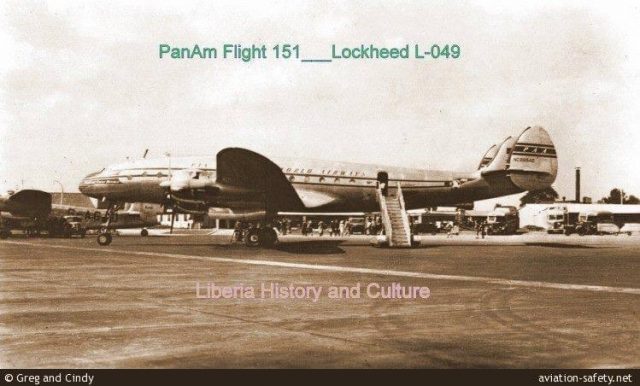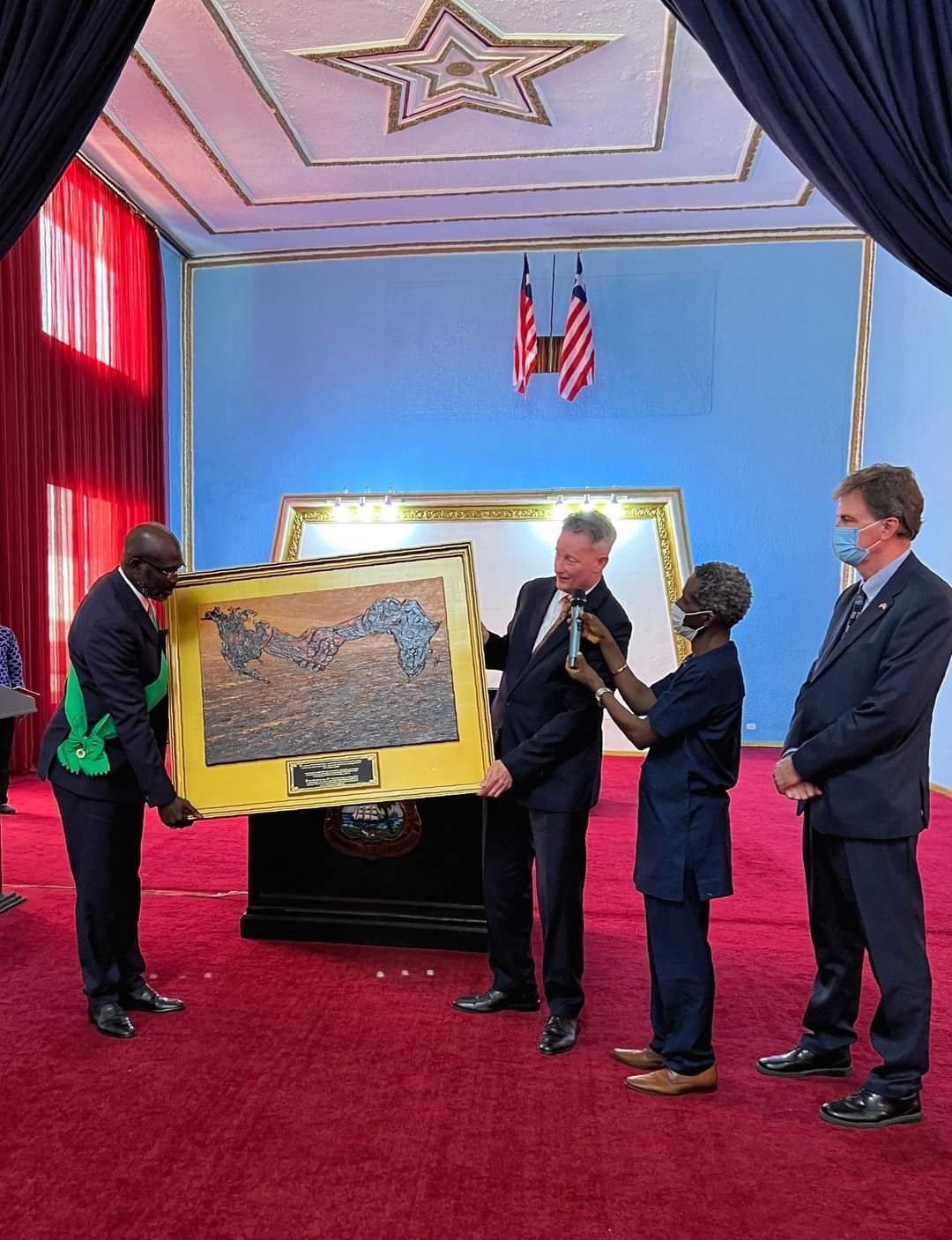All 31 Passengers and 9 Crew members Died.
Pan American’s Flight 151 departed Johannesburg for New York. At 08:12, June 21, after a routine flight and scheduled stop at Leopoldville “Clipper Great Republic” arrived at Accra at 21:25.
Following a mechanical delay which required the changing of several spark plugs and a set of magneto points, the flight was dispatched and cleared to Monrovia, on an instrument flight plan at 16,500 feet with Dakar.
Take-off from Accra was at 23:52Z and the flight climbed to en route altitude. At 02:20 Flight 151 requested clearance to descend.
Roberts Field radio cleared the flight to descend to 3,000 feet. Five minutes later the flight was cleared by the tower controller to descend IFR over Roberts Range Station, and indicated that runway 05 was in use.
At 02:37 Flight 151 was again given local weather for Roberts Field: cloud base estimated 1,000 feet, broken, light drizzle and haze, visibility 3 miles.
At 02:55, nine minutes after its ETA, Flight 151 was heard calling Roberts Field. The tower responded but there was no indication that the aircraft heard the tower. Six minutes later contact was established on another frequency.
The flight reported that the Dakar radio beacon was interfering with the Roberts Field radio beacon and that they would “be back in 15 minutes”.
At 03:15 the crew were given another weather report; this was the last radio contact with the flight.
In an area(Sanoyea) where cloud bases were probably down to near the hilltops, the flight descended into a hill at 1050 feet msl and crashed.
PROBABLE CAUSE: “The Board determines that the probable cause of this accident was the action of the captain in descending below his enroute minimum altitude without positive identification of the flight’s position.”
In her book “Their Silent Message” , the widow of the dead Pilot writes about her time amongst the people of Sanoyea.
A Brief Summary.
“As soon as she was able, Mrs. Bowne made a pilgrimage to her husband’s grave. But her grief did not blind her to the misery she saw all around her.
She stayed in Sanoyea longer than she had expected and, upon her return to the U.S., she determined to help the villagers for the kindness and sympathy they had shown her. She began an intensive fund-raising campaign among the families of the air crash victims.
Because of the generosity and the donations from the United Lutheran Church of America, a dispensary and a mission were established. A team of Americans and European medical missionaries went to Sanoyea.
During the ensuing decade, Mrs. Bowne devoted herself to her work in church and civic organizations. And then one day, she revisited the place of her spiritual rebirth. She found defeat in the faces of the natives and stayed on to find out what had gone wrong.
The silent message which the author received from the people of Sanoyea is the same urgent message she has received from the people of the new nations wherever she has traveled. It is a plea for hope. The kind of hope that springs from an individual’s sense of dignity and worth. It is only from such an inner resource of self-esteem that people succeed in changing their lives.
What the peoples of the new nations really want is help in finding ways to help themselves.
The hoary paternalism of the colonial era must go. Mrs. Bowne’s book is a valuable contribution to those who seek a new understanding of international relationships.
Sources:
» CAB File No. 1-0053
» ICAO Aircraft Accident Digest No.2, Circular 24-AN/21 (107-110)
*MSL= Median Sea Level
An MSL measurement refers to the altitude or height above the average height of the oceans and seas. An MSL is a reference point for elevations. The MSL calculation is derived from observations of tides and seasonal variations over a 19 year period to arrive at the average MSL. A plane that flies at 10,000 feet MSL and stays level will register as flying at 10,000 feet MSL — no matter the terrain changes below the pilot.












